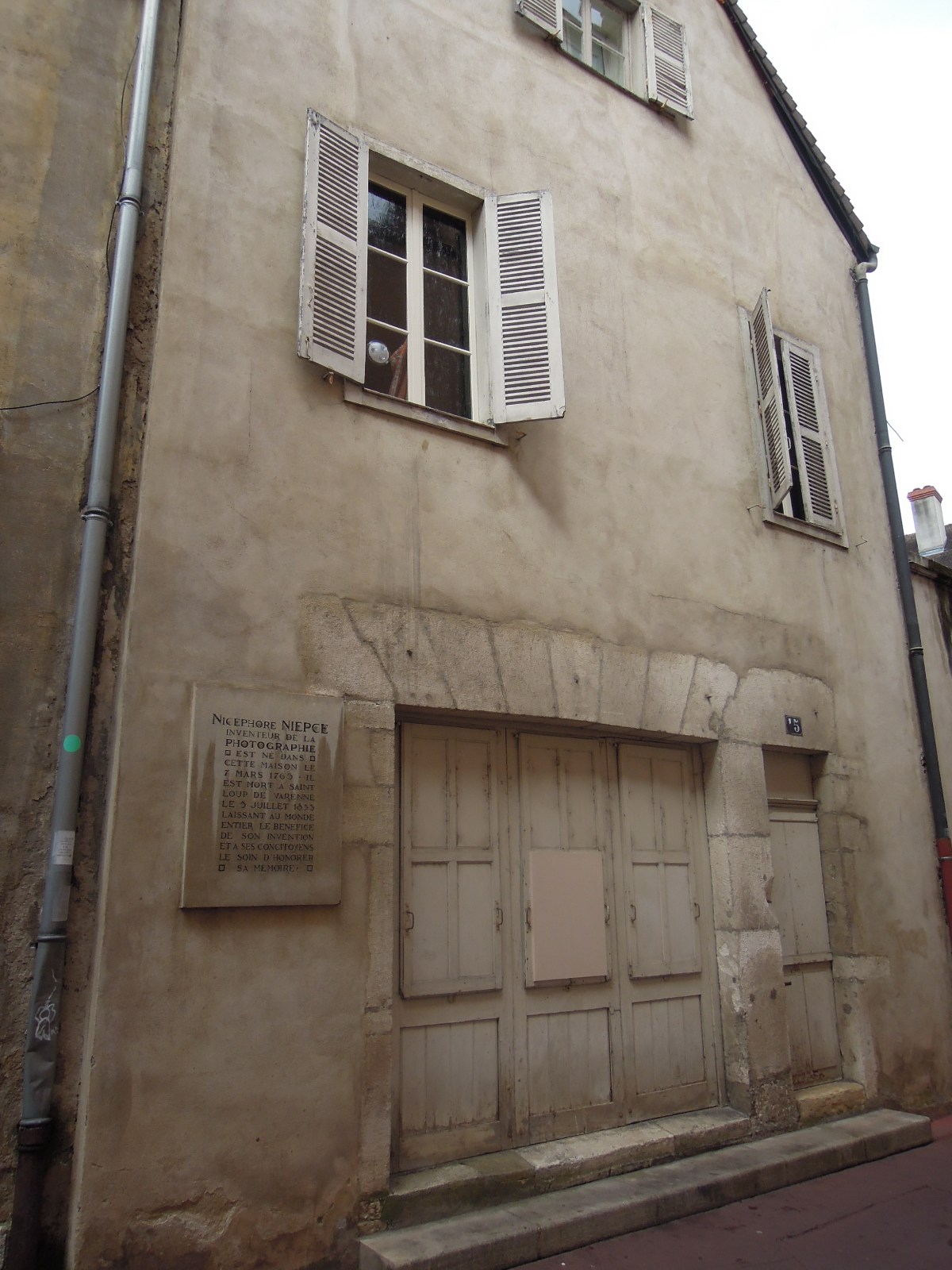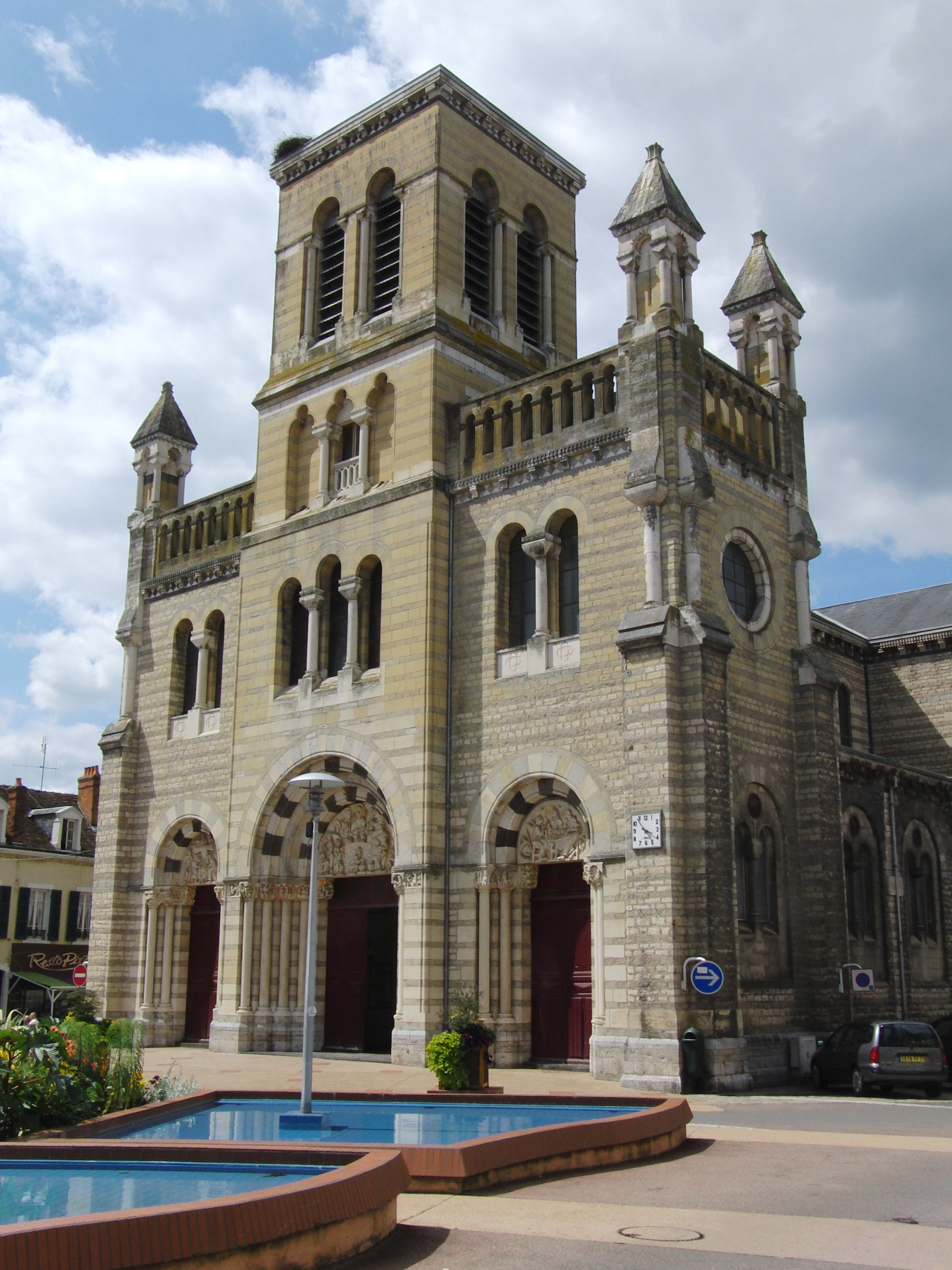|
Gueugnon
Gueugnon () is a commune in the Saône-et-Loire department in the region of Bourgogne-Franche-Comté in eastern France. Population Economy The primary industry in the town is a stainless-steel factory run by Aperam. A huge part of Gueugnon's economy is based on cow breeding, mostly because the city is located in the Charolais area. There is also an industrial and touristic zone 3 kilometers south of Gueugnon called Chazey with a sand quarry, a transport company and 5 ponds mostly used by anglers and canoe clubs. Gueugnon is a twin town of Otterberg, Germany. Tourism In Bourgogne-Franche-Comté, you can see : * The Arboretum de Pézanin, one of the richest forest collection in France, * The Rock of Solutré, * The Cluny abbey, and its medieval city, * Charolles and the "boeuf charolais", * Mâcon, Paray-le-Monial, *The Canal Bridge in Digoin, *Diverti'Parc in Toulon sur Arroux, *Touroparc Zoo in Romanèche-Thorins, * Nicéphore-Niépce museum in Chalon-sur-Saône. ... [...More Info...] [...Related Items...] OR: [Wikipedia] [Google] [Baidu] |
FC Gueugnon
Football Club Gueugnonnais (commonly called Gueugnon ) is a French association football club based in Gueugnon, Burgundy. The club was formed in 1940 and plays its home matches at the Stade Jean Laville located within the city. The club has spent majority of its history in the second and third tiers of French football, with a short spell in the top flight. It has had success at national level, most notably winning the League Cup in 2000, Ligue 2 in 1979 and reaching the semi-finals of the French Cup in 1991. The club faced bankruptcy in 2011 and subsequently reformed in the sixth tier; since then it has aimed to climb back up the league pyramid. History Football Club de Gueugnon was founded in 1940. Upon the club's creation, it earned the nickname ''Les Forgerons'' (''The Blacksmiths''), due to having strong support from the commune's local steelworks area. The club won the Championnat de France amateur in 1947 and, by 1970, were playing in the second division of Fren ... [...More Info...] [...Related Items...] OR: [Wikipedia] [Google] [Baidu] |
Communes Of The Saône-et-Loire Department
The following is a list of the 563 communes of the Saône-et-Loire department of France France, officially the French Republic, is a country located primarily in Western Europe. Overseas France, Its overseas regions and territories include French Guiana in South America, Saint Pierre and Miquelon in the Atlantic Ocean#North Atlan .... The communes cooperate in the following intercommunalities (as of 2025):Périmètre des groupements en 2025 BANATIC. Accessed 28 May 2025. * Communauté urbaine Creusot Montceau * Comm ... [...More Info...] [...Related Items...] OR: [Wikipedia] [Google] [Baidu] |
Toulon-sur-Arroux
Toulon-sur-Arroux (, literally ''Toulon on Arroux'') is a commune in the Saône-et-Loire department in the region of Bourgogne-Franche-Comté in eastern France. See also *Communes of the Saône-et-Loire department The following is a list of the 563 communes of the Saône-et-Loire department of France France, officially the French Republic, is a country located primarily in Western Europe. Overseas France, Its overseas regions and territories inclu ... References Communes of Saône-et-Loire Charolais, France {{Charolles-geo-stub ... [...More Info...] [...Related Items...] OR: [Wikipedia] [Google] [Baidu] |
Communes Of France
A () is a level of administrative divisions of France, administrative division in the France, French Republic. French are analogous to civil townships and incorporated municipality, municipalities in Canada and the United States; ' in Germany; ' in Italy; ' in Spain; or civil parishes in the United Kingdom. are based on historical geographic communities or villages and are vested with significant powers to manage the populations and land of the geographic area covered. The are the fourth-level administrative divisions of France. vary widely in size and area, from large sprawling cities with millions of inhabitants like Paris, to small hamlet (place), hamlets with only a handful of inhabitants. typically are based on pre-existing villages and facilitate local governance. All have names, but not all named geographic areas or groups of people residing together are ( or ), the difference residing in the lack of administrative powers. Except for the Municipal arrondissem ... [...More Info...] [...Related Items...] OR: [Wikipedia] [Google] [Baidu] |
Cluny Abbey
Cluny Abbey (; , formerly also ''Cluni'' or ''Clugny''; ) is a former Benedictine monastery in Cluny, Saône-et-Loire, France. It was dedicated to Saints Peter and Paul. The abbey was constructed in the Romanesque architectural style, with three churches built in succession from the 4th to the early 12th centuries. The earliest basilica was the world's largest church until the St. Peter's Basilica construction began in Rome. Cluny was founded by Duke William I of Aquitaine in 910. He nominated Berno as the first abbot of Cluny, subject only to Pope Sergius III. The abbey was notable for its stricter adherence to the Rule of St. Benedict, whereby Cluny became acknowledged as the leader of western monasticism. In 1790 during the French Revolution, the abbey was sacked and mostly destroyed, with only a small part surviving. Starting around 1334, the Abbots of Cluny maintained a townhouse in Paris known as the Hôtel de Cluny, which has been a public museum since 1843. A ... [...More Info...] [...Related Items...] OR: [Wikipedia] [Google] [Baidu] |
Chalon-sur-Saône
Chalon-sur-Saône (, literally ''Chalon on Saône'') is a city in the Saône-et-Loire Departments of France, department in the Regions of France, region of Bourgogne-Franche-Comté in eastern France. It is a Subprefectures in France, sub-prefecture of the department. It is the largest city in the department; however, the department capital is the smaller city of Mâcon. Geography Chalon-sur-Saône lies in the south of the Bourgogne-Franche-Comté and in the east of France, approximately north of Mâcon. It is located on the Saône river, and was once a busy port, acting as a distribution point for local wines which were sent up and down the Saône river and the Canal du Centre (France), Canal du Centre, opened in 1792. History Ancient times Though the site (ancient ''Cabillonum'') was a capital of the Aedui and objects of La Tène culture have been retrieved from the bed of the river here, the first mention of ''Cavillonum'' is found in Commentarii de Bello Gallico (VII, chs. ... [...More Info...] [...Related Items...] OR: [Wikipedia] [Google] [Baidu] |
Nicéphore Niépce
Joseph Nicéphore Niépce (; 7 March 1765 – 5 July 1833) was a French inventor and one of the earliest History of photography, pioneers of photography. Niépce developed heliography, a technique he used to create the world's oldest surviving products of a photographic process. In the mid-1820s, he used a Camera obscura, primitive camera to produce the View from the Window at Le Gras, oldest surviving photograph of a real-world scene. Among Niépce's other inventions was the Pyréolophore, one of the world's first internal combustion engines, which he conceived, created, and developed with his older brother Claude Niépce. Biography Early life Niépce was born in Chalon-sur-Saône, Saône-et-Loire, where his father was a wealthy lawyer. His older brother Claude (1763–1828) was also his collaborator in research and invention, but died half-mad and destitute in England, having squandered the family wealth in pursuit of non-opportunities for the ''Pyréolophore''. Niépce ... [...More Info...] [...Related Items...] OR: [Wikipedia] [Google] [Baidu] |
Romanèche-Thorins
Romanèche-Thorins () is a commune in the Saône-et-Loire department in the region of Bourgogne-Franche-Comté in eastern France. Population See also *Communes of the Saône-et-Loire department The following is a list of the 563 communes of the Saône-et-Loire department of France France, officially the French Republic, is a country located primarily in Western Europe. Overseas France, Its overseas regions and territories inclu ... References Communes of Saône-et-Loire Saône-et-Loire communes articles needing translation from French Wikipedia {{SaôneLoire-geo-stub ... [...More Info...] [...Related Items...] OR: [Wikipedia] [Google] [Baidu] |
Digoin
Digoin () is a commune in the Saône-et-Loire department in the region of Bourgogne-Franche-Comté in eastern France. The junction of the '' Canal du Centre'' and the '' Canal latéral à la Loire'' is near Digoin. Geography The river Bourbince flows into the Arroux in Digoin, while the Arroux flows into the Loire near Digoin. Population Sights Personalities * Adolphe Piot ( – ), French painter * Alain Robert (born 1962), French rock climber and urban climber *Étienne Maynaud de Bizefranc de Laveaux (1751–1828), French general and Governor of Saint-Domingue See also *Communes of the Saône-et-Loire department The following is a list of the 563 communes of the Saône-et-Loire department of France France, officially the French Republic, is a country located primarily in Western Europe. Overseas France, Its overseas regions and territories inclu ... References External links Town administration of Digoin Communes of Saône-et-Loire Burgundy ... [...More Info...] [...Related Items...] OR: [Wikipedia] [Google] [Baidu] |
Paray-le-Monial
Paray-le-Monial is a commune in the Saône-et-Loire department in the region of Bourgogne-Franche-Comté in eastern France. Since 2004, Paray-le-Monial has been part of the Charolais-Brionnais region. Its inhabitants are called Parodiens and Parodiennes. Geography Paray-le-Monial is located in the southwest of the Saône-et-Loire Département, in the heart of the Charolais countryside, in a plain bounded by the Brionnais upland, the rivers Loire, l'Arroux and the Bourbince. The roughly parallel Bourbince River and the canal du Centre traverse the city from the southeast to the northwest. Among the elements that form the city, as it has developed over its history, are the upland near the Bourbince River, the priory and basilica, a rectangular town center with very dense housing, national highway N79, which crosses the Bourbince River east and west of the town center, a newer part of town located north of the town center, the Bellevue residential area to the southwest, and ... [...More Info...] [...Related Items...] OR: [Wikipedia] [Google] [Baidu] |
Mâcon
Mâcon (), historically Anglicization, anglicised as Mascon, is a city in east-central France. It is the Prefectures of France, prefecture of the Departments of France, department of Saône-et-Loire in Bourgogne-Franche-Comté. Mâcon is home to near 34,000 residents, who are referred to in French as Mâconnais. The city gave its name to the nearby vineyards and wine 'appellation'. Geography The city lies on the western bank of the river Saône, between Bresse in the east and the Beaujolais hills in the south. Mâcon is the southernmost city in the department of Saône-et-Loire and the region of Bourgogne-Franche-Comté. It is north of Lyon and from Paris. The climate is temperate with a slight continental tendency. Climate Mâcon features an oceanic climate (Köppen climate classification, Köppen: ''Cfb''), with warm summers, slightly too cool to be called humid subtropical climate, humid subtropical (''Cfa''). Winters are relatively cold to French standards, but milder and ... [...More Info...] [...Related Items...] OR: [Wikipedia] [Google] [Baidu] |
Charolles
Charolles (; Burgundian: ''Tsarolles'') is a commune in the Saône-et-Loire department in the region of Bourgogne-Franche-Comté in eastern France. Since 2004 is Charolles part of the Charolais-Brionnais Country. Geography Charolles is located at the confluence of the Semence and the Arconce rivers, west-northwest of Mâcon. History Charolles was the capital of Charolais, an old division of France, which from the early 14th century gave the title of count to its possessors. In 1327, the county passed by marriage to the house of Armagnac, and in 1390 it was sold to Philip of Burgundy. After the death of Charles the Bold, who in his youth had borne the title of count of Charolais, it was seized by Louis XI of France, but in 1493 it was ceded by Charles VIII to Maximilian of Austria, the representative of the Burgundian family. Ultimately passing to the Spanish kings, it became for a considerable period an object of dispute between France and Spain, until at length in 168 ... [...More Info...] [...Related Items...] OR: [Wikipedia] [Google] [Baidu] |


